2019 in review: Student darkness, sustainability, elections, faculty fission – with a twist of beef
In just a few days, we’ll be waving goodbye to 2019 – a year that many at AU will remember as the Year of the Beef.
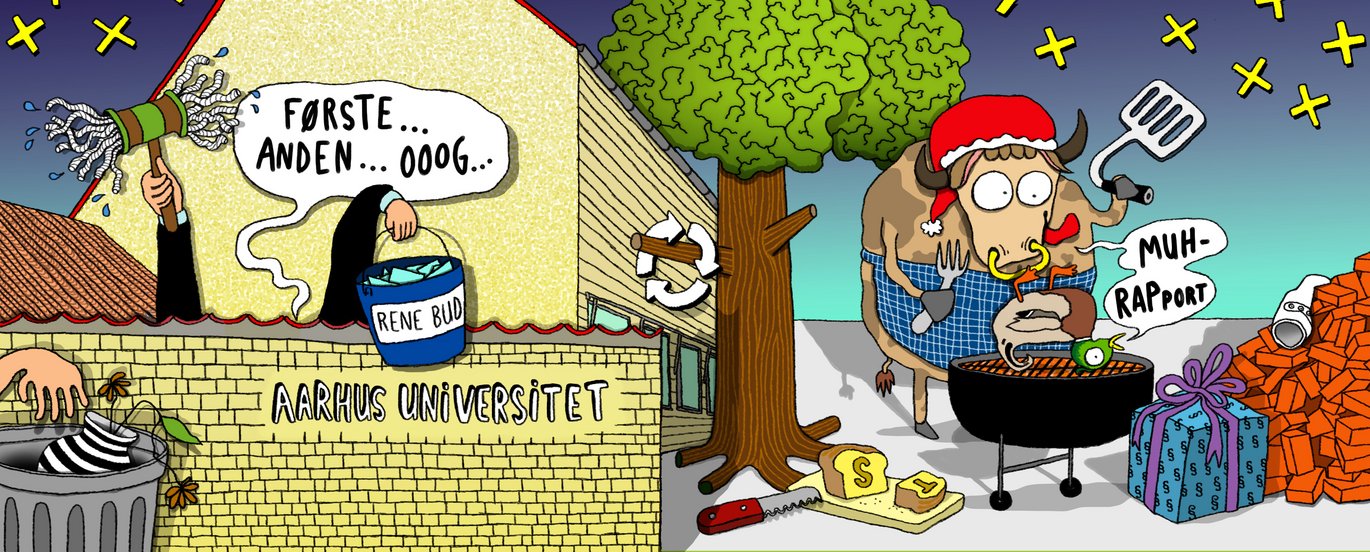
Around this time last year, we looked back on 2018 – after a lockout, attacks on research freedom and blackface – and heaved a sigh of relief as we coasted into 2019. Smooth sailing ahead, we thought. We were wrong.
Back to the Future, just not fun
The answer is no. This was former Minister for Higher Education and Science Tommy Ahler’s unequivocal response to 22 AU graduates who had applied for a dispensation, so they wouldn’t have to return to AU for one more semester.
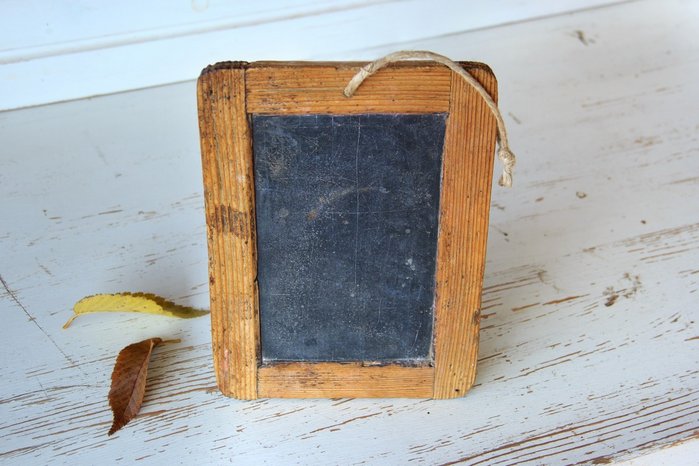
Photo: pxhere.com
According to the law, these graduates – who did their major at one faculty and their minor at another – were short a semester when they graduated. Thanks to administrative error the university had been making for ten years. Nonetheless, the ministry turned a deaf ear to the students’ appeal, and in November 2018, 211 graduates were informed that they would have to return to AU for an additional 30 ECTS credits.
Dazed and confused
While graduates were digesting the news that they’d have to return to their alma mater, current students were agonizing over whether they wanted to be here at all: Is this the right subject for me? Do I even want to be at university?
“I’ve always associated dropping out with not being smart enough,” Sarah Morthorst Christiansen explained. She had been struggling with doubts about her choice of degree programme since the very first semester of business administration. A struggle she was very much alone with a lot of the time. Because doubt is apparently not something students talk about much.
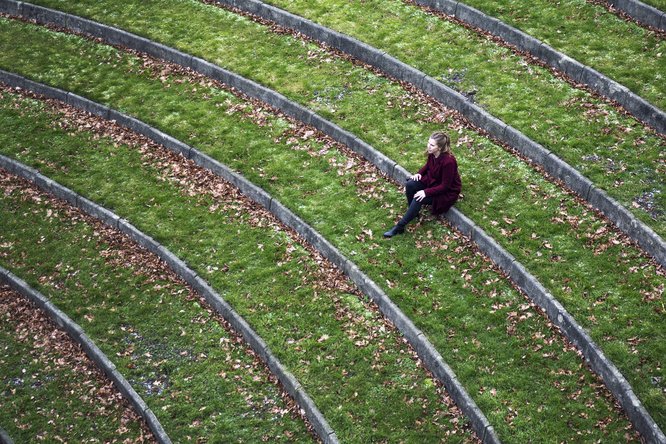
Photo: Lise Balsby
But it’s something a lot of them wanted to read about. The article ‘When should you break up with your degree programme’ was the fourth most-read article in Omnibus in 2019.
Lukewarm participation in debate on freedom of research at AU
On the other hand, there has been a lot of talk about freedom of research – or the lack of it – at AU. In November 2018, the senior management team commissioned a survey of freedom of research at AU.
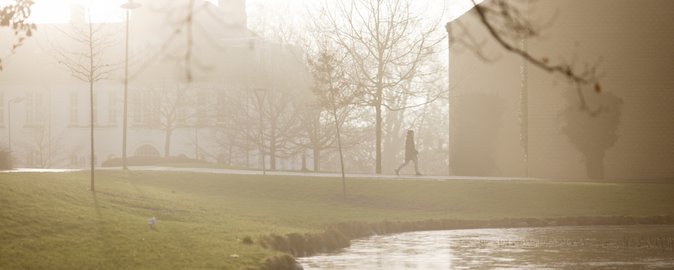
Photo: Melissa Bach Yildirim
The results were published in late January this year, after which the management invited the AU community to an open debate – which, however, was not exactly advertised loudly or widely. So not surprisingly perhaps, 40 people showed up at the debate at the Lakeside Lecture Theatres. Including the seven participants who had been invited to speak on the issue.
Mops, buckets and management’s time for core activities ...
Another announcement from the senior management team at about the same time this January created a much bigger stir: the idea was floated that managers at AU would have more time to focus on research and teaching if operational tasks are increasingly outsourced over the coming years.
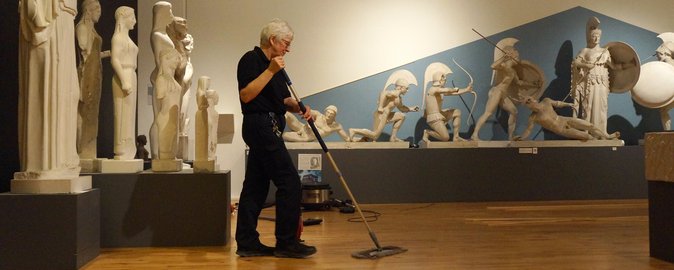
Photo: Lene Ravn
They thought that was pretty funny, the 30 cleaners who personified the first wave of the ‘operational tasks’ in question – who then went on to slay the senior management team’s arguments one after another, based on their experiences. Experiences that don’t figure in the spreadsheets of the bean counters.
The rector makes a clean sweep
In early February, Rector Brian Bech Nielsen rolled up his sleeves and got to work on the kind of deep clean most people put off til spring: he announced that the Faculty of Science and Technology (ST) was going to be split into two new independent faculties.
An announcement that the department heads who had been working for years to bring the diverse departments at ST closer together didn’t see coming.
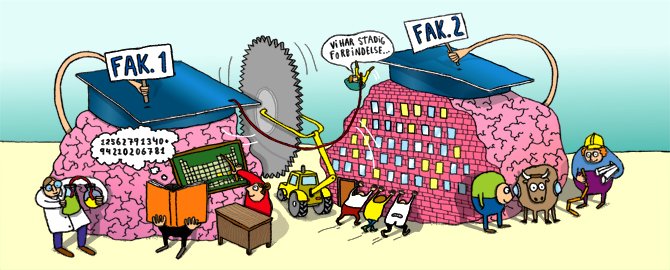
Illustration: Louise Thrane Jensen/Det Koloristiske Komplot
As Hans Brix, head of the Department of Bioscience in Aarhus, responded to the announced division of the faculty, put it:
“I think it makes a lot of sense, and in any case, this is the model there’s the most positive to say about of the models we discussed with the rector.”
But even though Brix was positive about the plan, he still had reservations:
“I’m concerned that the split-up will end up creating new barriers to collaboration. In recent years, we’ve succeeded in creating cross-departmental cooperation, and the same goes for the researchers here at the department.”
But the rector’s mind was made up, and the board approved the division.
AU’s first space station
While the management talked in circles about outsourcing, Delphini-1 orbited the earth 99 times before the team behind AU’s first space station caught a signal from the satellite in early February. After that first contact, the mission could begin, even though the team knew that more problems would duck up on their radar.
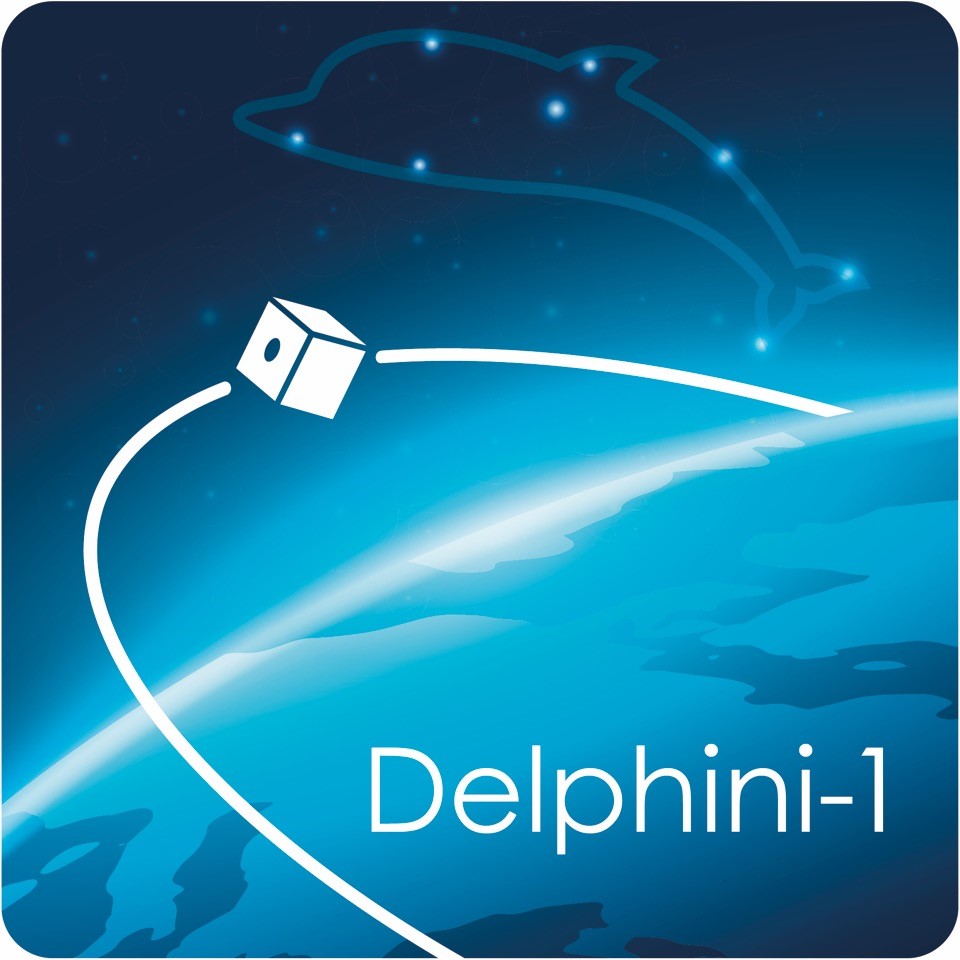
That’s just how (space) adventures go.
From cosmos to Kähler
But not long afterwards, we landed with a bump: in late February, the senior management team announced a decision to stop giving employees anniversary gifts, on the grounds that they were too much of a burden for the harried employees of the administrative centres and the central administration.
The management’s announcement was met with dismay by a lot of employees, according to several union reps.
“The symbolic value of this gift is incredibly high – and it will only increase if you take it away,” said Lotte Thue Pedersen, joint union representative for the university’s technical and administrative personnel.
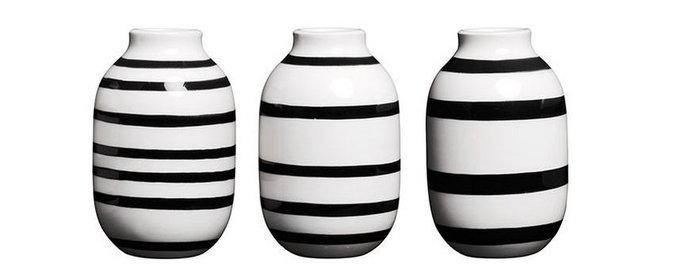
Press photo: Kähler
The management took the proposal off the table after bilateral negotiations between University Director Arnold Boon and joint union representatives Lotte Thue Pedersen and Olav. W. Bertelsen, who represents academic staff and university degree-qualified administrative staff. He filled in the background for the management’s about-face:
“The management has identified a problem with the administration of these gifts. And we have helped them understand what kind of signal abolishing the gifts would send, and what it would mean for support for the senior management team among employees. After all, the management doesn’t exactly need to send a signal that employees who have been here for 25, 40 or 50 years aren’t valued.”
The research elite’s smorgasbord
It would be wrong to call competitive research funding a gift. But nonetheless, there’s a select group of researchers who consistently get more packages under the tree when these funds are awarded. This was the conclusion of a study from the think tank DEA – the first study of the concentration of research funding in Denmark.
The researchers behind the report examined the distribution of competitive research funding in the period 2004-2016. About 7,500 researchers received funding in this period. But the amount of funding received by the individual researchers varied wildly: over half only received a single grant, while the most successful applicants were awarded up to 30 grants each.
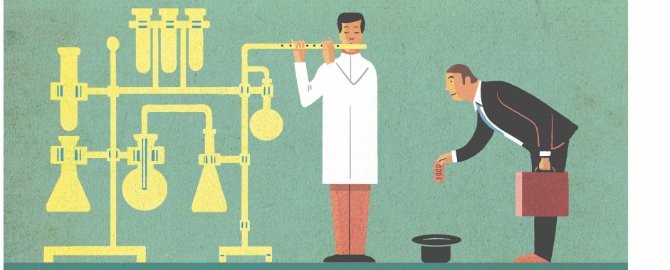
Illustration: Morten Voigt
And the most successful researchers not only receive the most grants – they also got the most money by far. If we look at the top 20 percent of researchers, they account for no less than three-fourths of the total amount of money granted in the period in question. In other words, the remaining 80 percent of researchers who were awarded a grant had to settle for a slice of the remaining one-fourth of the competitive funding awarded.
Torben Vang honored
And now for something completely different, as they used to say on Monty Python...
Together with oceanographer Morten Holtegaard Nielsen from Marine Science & Consulting ApS, Torben Vang, captain of AU’s research vessel Aurora, performed the calculations that led to the decisive breakthrough in the investigation of the murder of the Swedish journalist Kim Wall in 2017. And his contribution to that complex investigation was honored by the Anders Lassen Foundation, a foundation with roots in the Danish special operations forces.
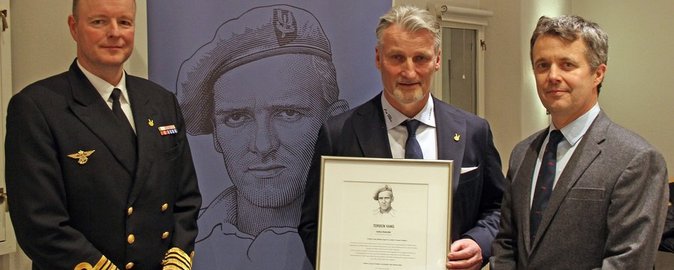
Photo: Anders Lassen Fonden
A more sustainable AU sees the light of day
‘Aurora’ means dawn, and – with Connie Hedegaard at the helm of AU’s board – we’ve seen the dawn of a sustainable strategy for AU that will make the university a greener place. Connie Hedegaard said that ”sustainability is part of being an ordinary well-informed person” when we interviewed her in connection with the conference ‘How do we create a more sustainable AU’ in the second half of March.
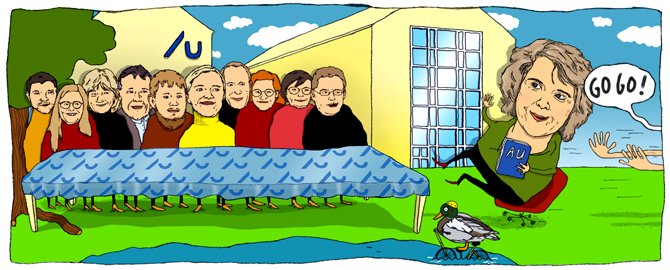
Illustration: Louise Thrane Jensen/Det Koloristiske Komplot
Women and quotas
“We will have to start using some more forceful measures than we did in the last action plan to have an effect,” Rector Bech Nielsen told Omnibus a few days later. He wasn’t talking about sustainability, though. He was talking about women. Women and quotas in the same breath, in fact – because the rector had come to the conclusion that the latter might become necessary in order to achieve a more equal gender balance at AU within a reasonable timeframe. Which in the rector’s world is before 2060, in any case.
Sara Kier Praëm, postdoc at the Centre for Science Studies, told Omnibus in early April about an interview she did with 25 women in connection with a research project aimed at understanding why women at AU decide not to pursue a career in research.
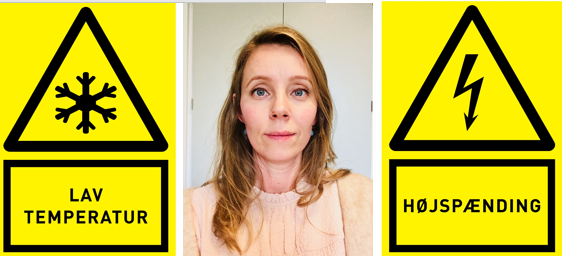
Photos: Colorbox og AU Foto
And the reason was clear:
1 in 10 believes there’s not freedom of speech at AU
The quality of the work environment was also a theme when we interviewed the rector about the results of the latest workplace assessment (WPA).
“It looks fine, generally speaking, and AU’s results are marginally better than the average for other universities and university colleges,” Bech Nielsen said.
“But of course, there are still some issues,” he conceded, noting with some concern that 10% of WPA respondents indicated that they didn’t feel free to express criticism in the workplace. Three years previously, only 6% of employees had felt that they were rarely or never free to express criticism.
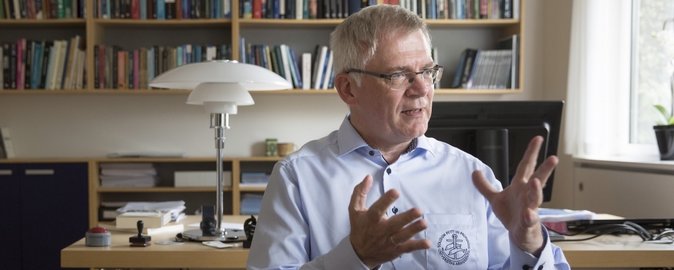
Photo: Lars Kruse/AU Foto
This increase came as a surprise to the rector:
“I’m interested in why. Because I think we’ve spent a fair amount of energy on emphasizing the value of freedom – including freedom of research. And there should be no doubt in anyone’s mind that there is freedom of speech at AU, and that the senior management team supports it. What’s behind the numbers is hard to say. There will always be some variation in the responses in a large organisation, but people shouldn’t feel that their freedom of speech is limited.”
The molecules of memory
People certainly don’t seem to feel their freedom of speech is limited when AU researchers venture outside the university’s yellow brick walls to give talks for the general public. Like the 245 good citizens of Stakroge in mid-Jutland. 18 of them had shown one day in late April to hear scientist Magnus Kjærgaard talk about ‘the molecules of memory’ at the local cultural center.
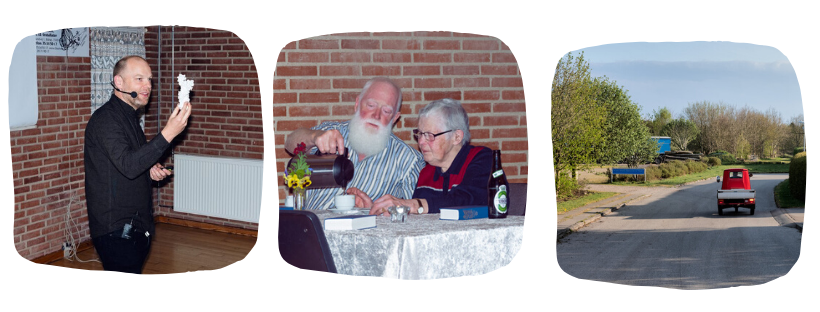
Magnus Kjergaard is a researcher at the basic research center PROMEMO, which is working to illuminate the role of proteins in memory. But he also feels he has a duty to contribute his knowledge to public discourse:
“I do this because I believe that when we receive such big grants, we also have a duty to communicate what we spend all that money on. And we’re also living in an age in which we can’t take for granted that decisions are made on the background of solid science.”
The two tribes: TAP vs. VIP
And then there are other kinds of people. Like the people who work in the administration, and we all know what they’re like. And then there are those who work in what’s often rather poetically referred to as ‘the academic environments’ here at AU. And we know everything about them too. Or do we? PhD student Andreas Kjær Stage certainly does; he’s the author of a study that shows, for the first time, how the employee population composition at Danish universities has developed over the past twenty years.
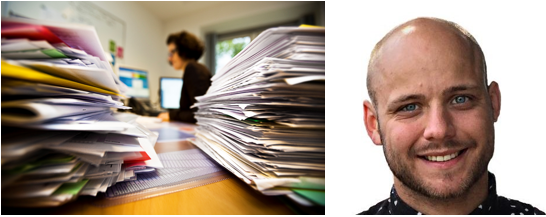
While the proportion of tenured academics has shrunk, the PhD and postdoc population has ballooned. And in the administration, clerical workers and manual and technical employees have been replaced by university graduates. Generally speaking, the academic staff group has grown more than the administration.
The question of who to vote for
In June, it was time to shift our focus from goings-on in our yellow brick tower to goings-on within in the brown walls of Christiansborg, seat of the Danish Parliament.
Over two weeks, Omnibus followed two students as they wrestled with the question of who to vote for in the national elections on 5 June this year. Nickan Zakikhany was one of them. In the previous election, he had voted for the Danish Social Liberal Party after reading about their key issues. But he also acknowledged that “it meant something that this what who my parents voted for, even though they said that I had to form my own opinion.”
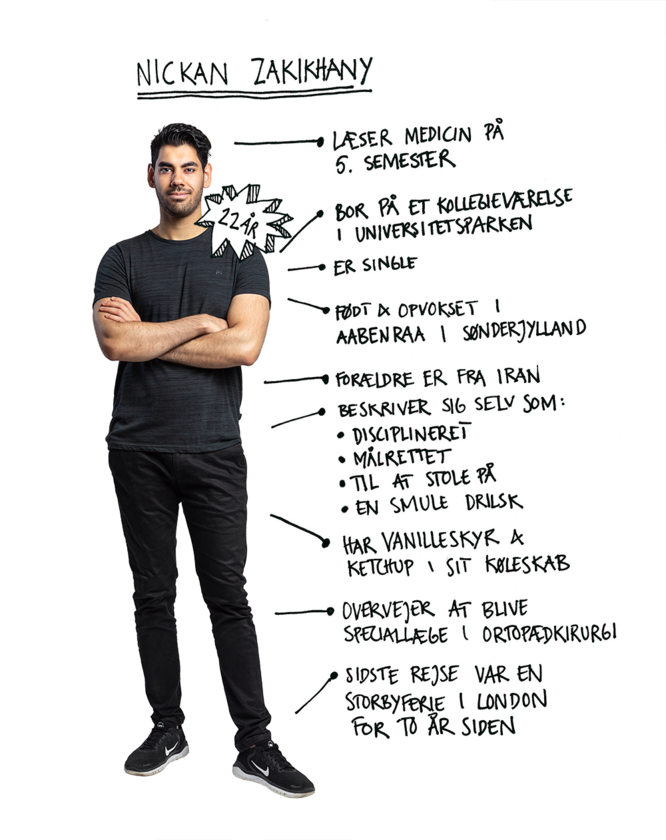
Graphics: Astrid Reitzel
The other student we spoke to was Andreas Røge Jepsen from Aarhus. He had voted for Liberal Alliance in the preceding election because of “the party’s clear goals and ambitions”. But even though Jepsen is a guy with definite views, he had doubts as to who he wanted to vote for this time. He was sure, however, that the decisive issues for him were education and healthcare, because “everyone agrees that something needs to be done about the climate anyway”.
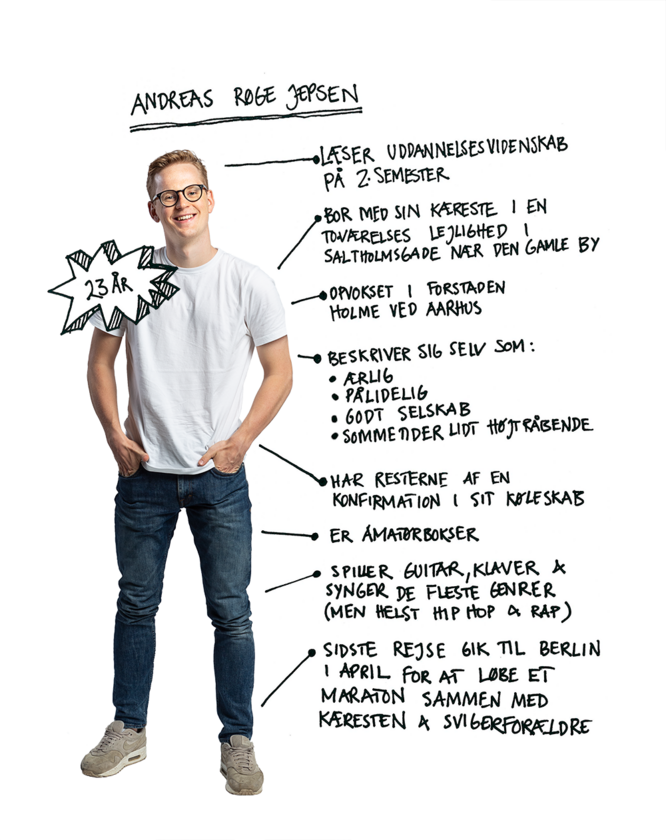
Graphics: Astrid Reitzel
The two students did finally make up their minds: Zakikhany voted for Simon Simonsen from the Danish Liberal Party, and Andreas Røge Jepsen voted for Klaus Riskær Pedersen.
Sixth minister for higher education and science in five years
Neither Nickan Zakikhany nor Andreas Røge Jepsen voted for the Social Democratic Party. But so many other people did that Mette Frederiksen became the second female prime minister in Danish history. And as as her governing coalition’s minister for higher education and science, she selected another female Social Democrat, Ane Halsboe-Jørgensen.

Photo: Sten Brogaard
The new minister was the latest to join a game of ministerial musical chairs; none of the preceding five occupants of that seat had gotten to spend much time in it. Since Morten Østergaard (Social Liberal Party) was replaced by Sofie Carsten Nielsen (Social Liberal Party) in February 2014 after 28 months as minister, succeeding ministers have only lasted for about a year. Some a little more, some a little less.
In fact, there have been five different higher education and science ministers in the five years since Sofie Carsten Nielsen took over in February 2014.
Student given six attempts to pass exam – after two plagiarism offences
As the revolving door at the Ministry of Higher Education and Science spun round, it it was virtually impossible to give at least one AU student the boot. As associate professor of cognitive semiotics Peer Bundgaard discovered, a board of studies had given one of his former students six attempts at passing an exam. Even though Bundgaard had caught the student plagiarizing on two of these occasions.
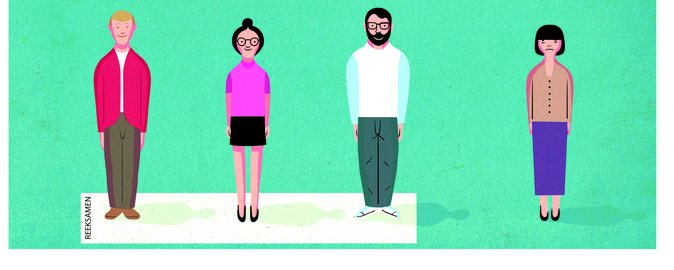
Illustration: Morten Voigt
Boards of studies at AU approve three out of four applications for extra exam attempts. But practices vary widely. In late June, the chairs of the boards of studies who approve and reject the most requests respectively explained their criteria for giving a student another chance.
And then – summer vacation. Finally! At long last, we could focus on what’s really important in life: eat big ice cream cones (three scoops, please) without worrying about spilling anything on our clothes.
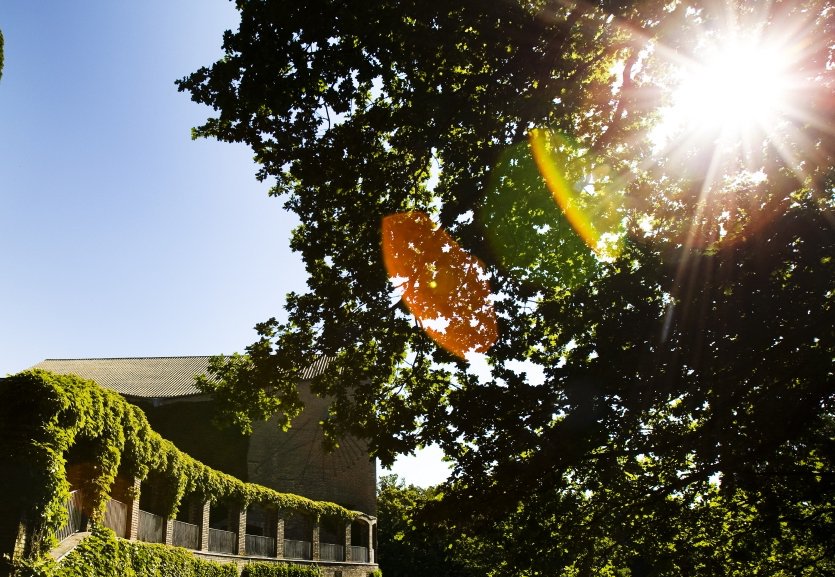
Photo: AU Foto
Bioanalysts kept their eye on the ball
While our ice cream cones melted under the hot summer sun, AU’s bioanalysts were busy chasing balls. The balls from roll-on deodorants, that is. Because these plastic balls can be used to fill special duvets that help children with ADHD and autism calm down and sleep better at night. To fill one duvet, you need about 3,000 balls. When we interviewed them, they still needed about 2,877...
Unlike AU’s senior management team ...

Graphics: Miriam Brems
Because as we mentioned earlier, there are too many balls in academia – the macho kind. When AU’s new diversity and gender equality committee held its first meeting in July, vice-chair and pro-rector Berit Eika announced that her target for better gender equality among academic and managerial personnel at AU was a female-male ratio of 40/60 – to be reached sooner rather than later, she added. And lo and behold,the goal of a more equal gender ratio among academic staff was written into AU’s strategy for the first time a few months later – but in a less concrete form.
From fire sale to firefighting
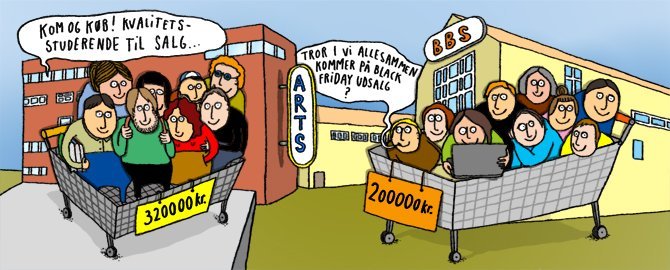
Illustration: Louise Thrane Jensen/Det Koloristiske Komplot
And when new students showed up at the Faculty of Arts in late August, a new strategy met them at the door. In the wake of the previous year’s criticism of aggressive trade union recruitment techniques, the faculty decided to put a stop to all financial cooperation with trade unions and unemployment funds in connection with introduction week.
And Aarhus BSS struck the exclusivity clauses from its contracts with introduction week sponsors. But as Aarhus BSS vice-dean Per Andersen discovered, this didn’t go far enough: introduction week tutors still wore sponsor T-shirts this year, even though it’s against the rules.
There was also room for improvement at Science and Technology, where new students were bombarded with advertisements for the engineers’ union IDA – to the extent that they interfered in the social aspect of introduction week.
Rewilding (a corner of) the unipark
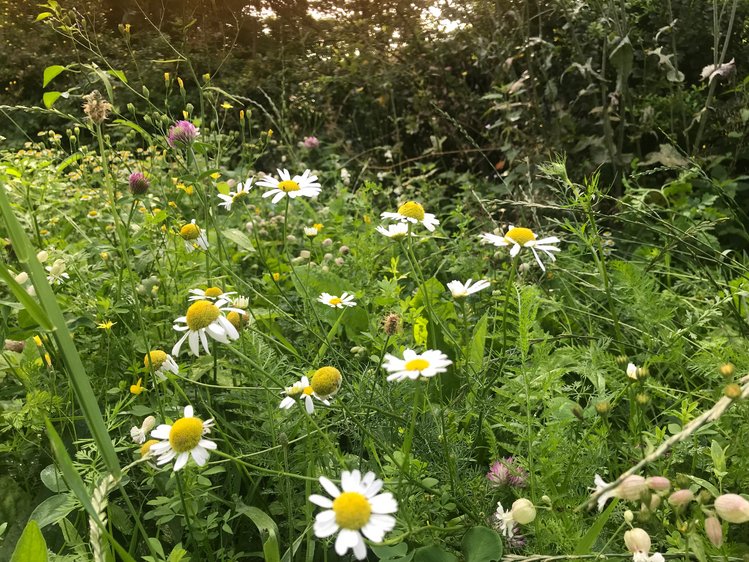
The well-trimmed order of the University Park was challenged by biologists and grassroots voices this year who agitated for more untamed nature and greater biodiversity. And even though sainted C.F. Møller probably turned in his grave at the thought, the biologists were allowed to give nature free reign on a strip of unipark next to Ny Munkegade.
The force be with you – and your restroom
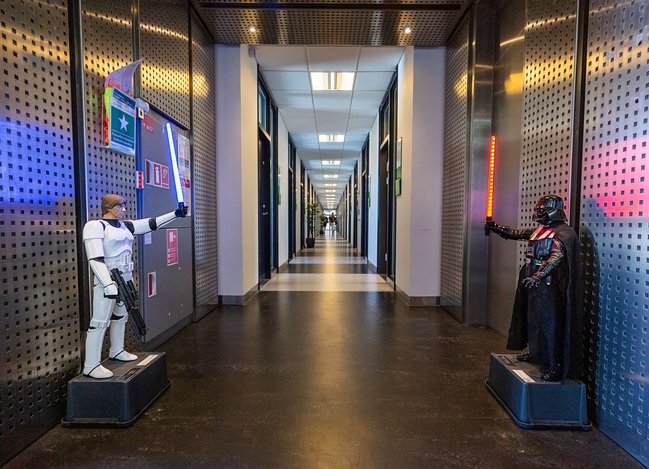
Photo: Roar Lava Paaske
We all have to answer the call of nature on occasion. And we all hate standing around waiting outside a locked restroom door on the hallway trying to look casual. An unusually elegant solution to this first-world problem has been found in the Hopper Building in Katrinejbjerg, where Darth Vader and Luke Skywalker stand guard in the hallway by the restrooms. Their light sabers shine red and blue when the restrooms are occupied. The force is strong in those IT guys...
Grill season at AU
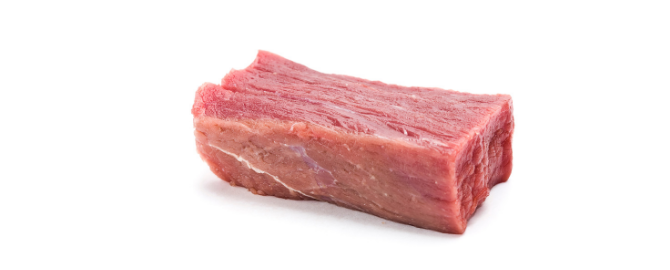
Photo: Colourbox
Just as the season for grilling outside was ending, an AU report on the climate impact of beef was served up – and promptly grilled to a crisp by the media. Initially, criticism focussed on the methodology used in the report, and the fact that it had been financed by a beef industry special interest group. Later, it was revealed that the collaboration between the report’s scientists and outside interests had been so close that special interest organizations had ghostwritten whole swathes of the report.
The minister for higher education and science demanded an explanation from AU. The rector described the case as highly objectionable, and in September, the university retracted the report. Department head Erik Steen Kristensen had to step down. It was time to clean up the university’s act and learn from the mistakes of the past. The rector and acting dean of ST Lars Henrik Andersen commissioned an internal study to uncover irregularities in all of DCA’s reports written in collaboration with companies and organizations in the past five years.
And throughout all the turbulence, the scientists behind the beef report continued to insist on the validity of their methods and findings.
Gentler winds from Christiansborg
While the media storm about the beef case raged, gentler winds wafted our way from Christiansborg when the new government began rolling back the policies of its predecessor. First, Minister of the Environment Lea Wermelin and Minister for Food, Fisheries and Equal Opportunities reversed former minister Esben Lunde Larsen’s decision to put science advice contracts worth 730 million kroner out for competitive tender. This was good news for AU, the university with the most research and consultancy contracts with the Ministry of Environment and Food of Denmark. AU’s contracts with the ministry are worth about 400 million kroner annually.
At the end of September, the government also promised to scratch another of Esben Lunde Larsens most despised initiatives: the requirement that the country’s educational institutions reduce their budgets by 2% each and every year, introduced by Larsen when he was minister for higher education and science in 2015.
But at the same time, the government introduced an element of suspense in relation to whether the so-called taximeter increase – a temporary funding boost for the humanities and social sciences – would be allowed to continue. But when the Finance Act was finally adopted this month, it turned out to contained early Christmas gifts for the universities: not only has the taximeter increase been prolonged for an additional three years, the heavily criticized degree program ceiling was also removed.
AU’s new campus begins taking form

Photo: Lise Balsby
On what will one day be AU’s University City campus, the builders didn’t stop at busting holes in ceilings. They’ve gutted what used to be the neurology department of the former municipal hospital to repurpose it as the new home the Department of Molecular Biology and Genetics, which will be the first department to move onto the new campus, in early 2022.
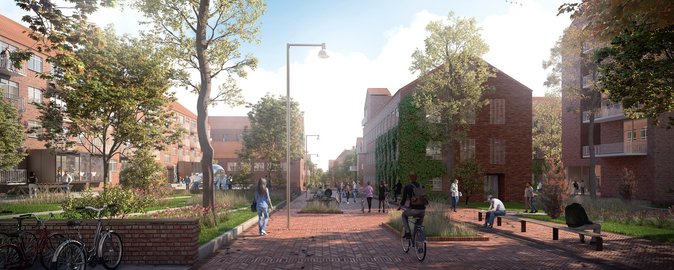
Visualisation: AART architects
And before that, in early 2020, AU’s new entrepreneurship hub the Kitchen will move into what used to be the hospital’s central kitchen.
Student darkness
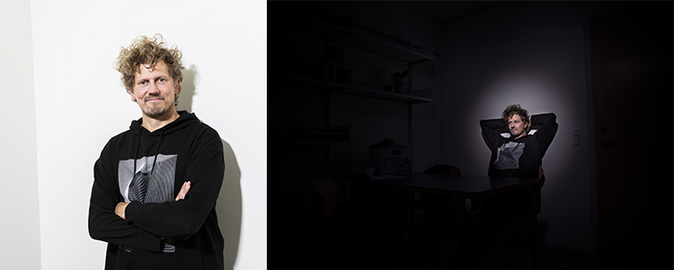
Photo: Lise Balsby
What do a construction site and student life have in common? Both can be messy. And two AU students, Signe and Sebastian, have been exploring the confusions and conundrums of student life in their podcast, Studieforvirring (‘student confusion’). The last episode of the season came out this month. Confusion can morph into something darker. And in his dissertation, PhD Janus Holst Aaen explores a phenomenon he calls ‘student darkness’. And argues that both students and the university need to acknowledge that darkness – frustration, anger, boredom, tiredness, desire and disgust – are part of student life. And that this darkness isn’t necessarily negative.
Chemistry’s guiding light
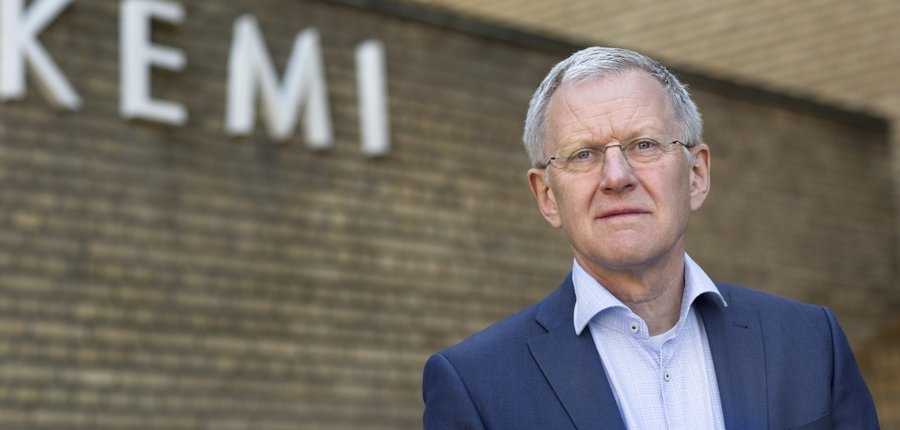
Photo: Lars Kruse/AU Foto
In October, professor of chemistry Karl Anker Jørgensen had his moment in the spotlight, when he was awarded a gold H.C. Ørsted medal by none other than HM Queen Margrethe II. The medal has only been awarded 17 times in 110 years, and is given in recognition of outstanding scientific work in the fields of physics and chemistry.
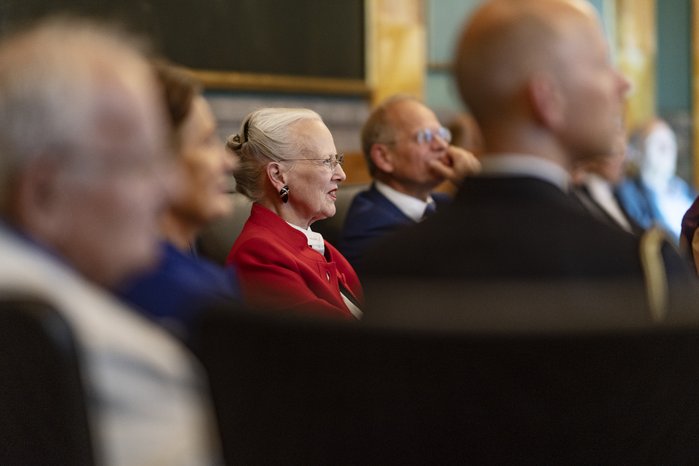
Photo: Videnskabernes Selskab
From regent to rector: the rector and the rest of the senior management team presented a draft of the university’s new strategy this fall, which was subsequently made available for consultation.
And no, the new strategy isn’t going to turn the world upside down, the rector stressed. This strategy is in step with the previous one. With a few significant additions. Because an interest in sustainability has finally sprouted at the highest levels of management: according to the new strategy, not only should the the university conduct research into sustainable solutions, students should be taught sustainability as part of their education. And the university needs to be more vocal in public debate.
Not that there was much debate in the university elections, when employees and students elected representatives to the AU board. But elected they were. Four out of five internal members of the board are new faces, and the Student Council retook both student seats on the board, regaining the seat lost to the Conservative Students in last year’s elections.
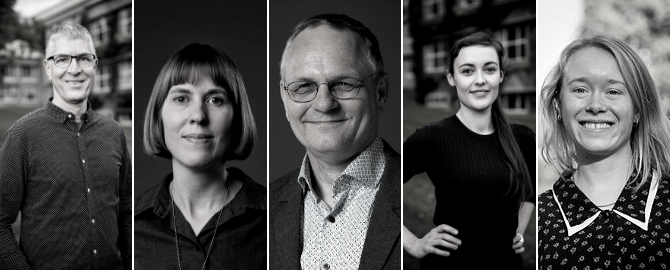
Photos: Lise Balsby, Jonas Ahlstrøm og Ida Marie Jensen
The beef report was not a lone wolf
The senior management team must have also felt a little lost when they saw the results of the internal investigation launched in the wake of the beef case. The beef report was not an anomaly. Serious errors were found in three additional reports, and corrections were found necessary in 34 more. Out of 55. With that sorted out, management was ready to move on.
But others – including the newspapers Information and the one you’re reading right now – still wanted more details about the decision to launch an investigation. And then management went silent. Completely silent.
The square root of research collaboration
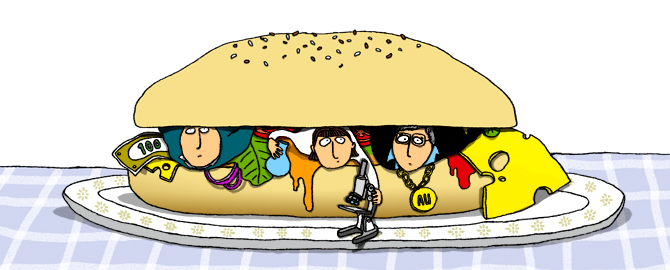
Illustration: Louise Thrane Jensen/Det Koloristiske Komplot
Until former department head Erik Steen Kristensen decided to speak his mind.
“The way I see it is that if you take the square root of this case, it comes down to the fact that there wasn’t a contract. And that’s my responsibility,” he said:
“But that said, you would be able to find similar cases at other departments at AU, so at bottom it’s also about whether the university is really capable of handling an increasingly close collaboration with society.”
Senior scientist Kaare Aagaard, an expert in government research from the Danish Centre for Studies in Research and Research Policy at the Department of Political Science, agrees:
“The problems are not linked to a particular government research culture. Rather they’re a general challenge wherever there’s collaboration with external partners. So in my view, it’s erroneous to represent this as an issue that’s exclusively limited to the former government research institutions, as we’ve seen it represented from several quarters in the media.”
Frustration raised to the power of infinity
And the scientists at these very government research institutions also felt the need to speak their mind: they were thoroughly sick of being accused of having a dysfunctional research culture in which scientists don’t respect the importance of impartiality and the arm’s length principle. They expressed their frustration to the rector at a staff meeting in Foulum before Christmas.
Dean of the new faculty
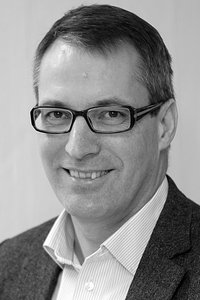
Duck or goose? Both! Eskild Holm Nielsen, who will become dean of the new Faculty of Technical Sciences when Science and Technology is split into two new faculties on New Year’s Day, knows what he’s having for Christmas dinner. But he doesn’t know who his counterpart at the new Faculty of Natural Sciences will be.
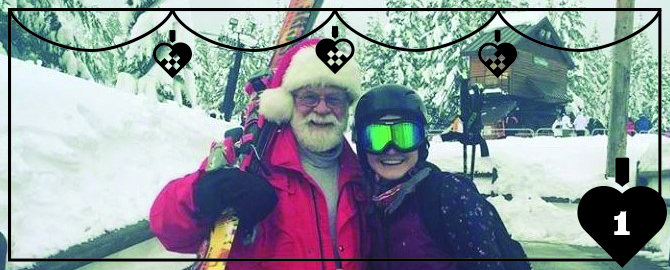
In the meantime, we might as well all help ourselves to a cookie, top up our gløgg and expand our Juletide horizons by reading about how our colleagues from other countries grab Rudolph by the horns - and prepare ourselves for the bizarre local traditions of ‘the package game’ and ‘dancing’ around the Christmas tree.
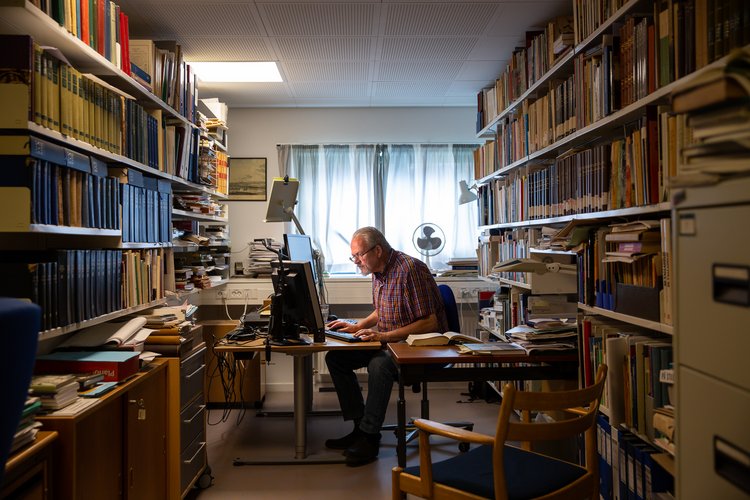
Photo: Lars Kruse/AU Foto
And thus we close another chapter of AU’s history. What will happen in the next chapter – not to mention who will write it – is anyone’s guess. Because university historian Palle Lykke archived the last day of his 31-year career at AU and retired shortly before Christmas. And so the next few pages of AU’s history must go unrecorded, at least for the time being.
Merry Christmas!
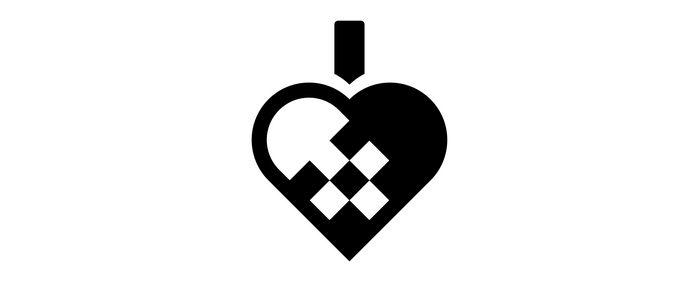
Graphics: Astrid Reitzel
Translated by Lenore Messick

